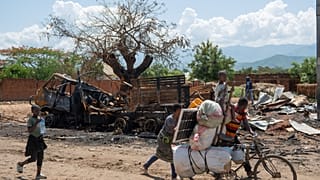USA
The U.S. total fertility rate has dropped to an all-time low of 1.599 children per woman, according to new federal data released by the CDC — far below the 2.1 rate needed to replace the population.
“This is the lowest level we have seen in the United States,” said Karen Guzzo of the University of North Carolina. “And this is below what we consider the replacement level.”
Experts point to economic anxiety, climate concerns, and struggles with housing and healthcare as key reasons for the decline. “Worry is not a good moment to have kids,” Guzzo explained.
Despite a slight increase in total births — just over 3.6 million in 2024 — analysts say the rise was due to population shifts, not higher fertility among women. Most age groups, particularly women in their 20s and early 30s, actually saw birth rates decline.
While the Trump administration has proposed incentives like “baby bonuses” and IVF access, Guzzo warns such policies may be symbolic. “They don’t tackle the larger needs, like paid parental leave and affordable child care,” she said.
Demographers say the trend reflects a long-term delay in childbearing, not a population crisis. But the gap between policy and reality continues to spark national debate.











00:41
Mali and Burkina Faso restrict entry to US nations in tit-for-tat move
00:55
US airstrikes deepen debate in Nigeria as analysts warn against quick fix
01:06
Trump administration expands U.S. travel ban to five more countries
00:03
Court suspends Kenya-U.S. $2.5 billion health cooperation deal
01:05
Uganda to receive $1.7 billion of US funding under new health deal
01:52
Nigeria: Abducted schoolchildren reunite with families as over 150 remain captive